Back Street

Brief Synopsis
Cast & Crew
Robert Stevenson
Charles Boyer
Margaret Sullavan
Richard Carlson
Frank Mchugh
Tim Holt
Film Details
Technical Specs

Synopsis
In Cincinnati at the turn of the century, aspiring automobile manufacturer Curt Stanton leads a parade to introduce the city to his new horseless carriage. Although Curt had hoped to gain financial backers, the car breaks down directly in front of a bank. Curt, now a laughingstock, pushes the car back to his bicycle shop, where his passenger, shop girl Ray Smith, tries to comfort him. Curt proposes to Ray, but is turned down as usual. Later that evening, Ray visits with her traveling salesmen friends, including Ed Porter. Ray then takes Ed to the railway station, where she meets investment banker Walter Saxel. Walter and Ray immediately fall in love, causing Walter to postpone his trip to New Orleans. Ray's dreams of marriage are shattered, however, when Walter admits that he is engaged to his boss's niece and breaking the engagement would ruin him socially and professionally. Walter leaves to catch his boat but has a change of heart, calling Ray and begging her to meet him. He then arranges two passages and hires a justice of the peace. Ray misses the boat, however, after salesman Harry Niles abducts her and she is forced to walk back to town for refusing to submit to his desires. Ray then watches brokenheartedly from the docks as Walter's boat sails away. Five years later in New York City, Walter runs into Ray on the street. Despite his marriage and young son, Walter and Ray immediately fall back in love and Ray becomes Walter's mistress. Thrown out of her apartment because of the affair, Ray moves into another apartment, where Walter is accepted as "Mr. Smith." After two years, Ed finds Ray and, when he learns of her arrangement with Walter, begs her to leave, offering her a job as a clothing designer. Ray refuses and continues as Walter's mistress. Walter is forced by his uncle to take a prolonged business trip to Europe with his wife, and Ray waits endlessly for his return. Curt, now a great success in the automotive field, arrives at their apartment and takes Ray out for her first night on the town in years. Curt proclaims his love, but rather than proposing in person, offers to write her of his desires. Returning to her apartment, Ray finds Walter waiting, but her joy is shortlived when she learns that Walter's wife bore him a daughter during the trip. Ray then decides to leave Walter and returns to Cincinnati. Ed arrives in town and learns that Ray is going to Detroit that night to marry Curt. At the railway station, Ray and Ed are confronted by Walter, and she once again goes back to the banker. Years later, in 1928, Walter and his family board a boat to Europe, where Walter will head an American banking commission in Geneva. Also boarding the ship is Ray, whose relationship to Walter is now common knowledge. With Walter away at the conference, Ray is confronted at their Paris apartment by Richard, Walter's grown son. Walter returns unexpectedly and tells his son of their longtime love, but Richard is not moved and proclaims his disgust with his father. After Richard leaves, Ray learns that Walter has been removed from the commission due to their relationship, and the weary Walter leaves, promising to see her the next day. When Ray opens the newspaper the next day, however, she learns that Walter has had a "paralytic stroke." On his deathbed, Walter calls Ray and dies as she listens on the phone. Days later, Richard visits the heartbroken Ray at her apartment. Ray proclaims her love for Walter, speaks of what would have happened if she had not missed the boat years ago, and dies with Walter's picture in her arms.

Director

Robert Stevenson
Cast

Charles Boyer

Margaret Sullavan

Richard Carlson
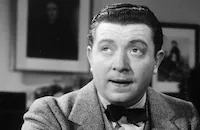
Frank Mchugh
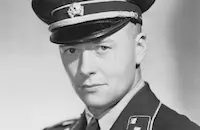
Tim Holt
Frank Jenks
Esther Dale
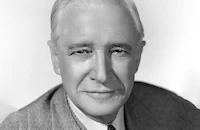
Samuel S. Hinds
Peggy Stewart

Nell O'day
Kitty O'neil

Nella Walker

Cecil Cunningham

Marjorie Gateson
Dale Winter

Irving Bacon

Ludwig Stossel
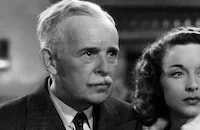
Howard Hickman
Mary Forbes

Joe Crehan
Charles Trowbridge

Charles Lane
Georges Renavent
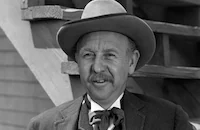
Charles Arnt
Ernest Whitman
Billy Mitchell
Dick Elliott
Selmar Jackson
Marcelle Corday

Emmett Vogan
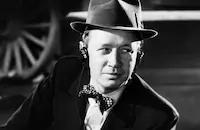
Eddie Acuff
Frank Jaquet
Billy Wayne
Virginia Sale
André Cheron
Ferris Taylor
Mary Currier
Henry Roquemore
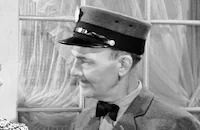
John Butler
Whitey Rodgers
Herbert Ashley
Robert Homans
Harry Holman
Milton Kibbee
Walter Mcgrail
Paul Barrett
Michael Audley
William Alston
Victor Zimmerman
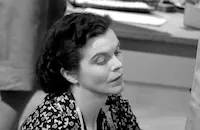
Dorothy Adams
Jack Mulhall
James Mcnamara
Frank Austin
David Oliver
Tony Paton
Tom Pogue

Norma Jean Nelson
Spec O'donnell
Ken Lundy
Kernan Cripps
Pat O'malley
Tom O'grady
Duke York
Ray Cooke
Dora Clemant
Crew
Bernard B. Brown
R. A. Gausman
William Hedgcock
Ray Hoadley
Felix Jackson
Ted Kent
Muriel King
Bruce Manning
Bruce Manning
Mrs. Tommy Mccoig
Barney Oldfield
Jack Otterson
Charles Previn
Richard H. Riedel
Frank Shaw
Frank Skinner
Seward Webb
Vera West

Photo Collections
Videos
Movie Clip


Hosted Intro
Film Details
Technical Specs

Award Nominations
Best Music Original Dramatic Score
Articles
Back Street (1941)
The story of Back Street was first filmed in 1932 with John Boles and Irene Dunne as the lovers who can never quite make it work. The 1941 version starred the debonair Charles Boyer and the soulful Margaret Sullavan as the illicit lovers with Robert Stevenson directing. This version, with Boyer and Sullavan, has remained the favorite of critics and moviegoers alike. Critic Bosley Crowther called it "the quintessence of what is known as the woman's picture," referring to its resonant core of melodrama and pathos.
Viewers were particularly impressed with Sullavan and Boyer; the latter especially because he brought a sympathetic quality to his part of the philandering Walter. However, the one person who did not like the choice of Boyer was author Fannie Hurst. She felt that the part of Walter was decidedly Midwestern, and the French-born Boyer was all wrong for the part. Hurst was also offended when the studio rejected her input and gave Bruce Manning the task of writing the screenplay. When Back Street later opened, Hurst was vocal about her dislike for the film despite its vast popularity with the public.
Another thorn in the side of the studio and screenwriter Manning was Joseph Breen of the Production Code Administration. Breen was worried that Back Street would romanticize adultery, so he put a plethora of restrictions on the film to ensure that it conveyed the message that the lives of Walter and Rae were worse off because of their affair. For instance, Rae had to always be shown "in a state of total degeneration caused by poverty and loneliness," and there could be "no suggestion that Walter had any sort of official appointment" as his means of employment. Additionally, there could be no "intimate love scenes" between the two. In response, Manning assured Breen that the story would be written as a tragedy in which everyone involved with the affair paid a terrible price.
Back Street was remade once more in 1961 by director David Miller with John Gavin and Susan Hayward as the leads, but the 1941 version is still considered the best adaptation and it won an Oscar nomination for Best Dramatic Score (by Frank Skinner).
Producer: Frank Shaw
Director: Robert Stevenson
Screenplay: Felix Jackson, Bruce Manning, based on the novel by Fannie Hurst
Art Direction: Jack Otterson, Richard H. Riedel
Cinematography: William H. Daniels
Costume Design: Muriel King, Vera West
Film Editing: Ted Kent
Original Music: Frank Skinner
Cast: Charles Boyer (Walter Saxel), Margaret Sullavan (Ray Smith), Richard Carlson (Curt Stanton), Frank McHugh (Ed Porter), Tim Holt (Richard Saxel), Samuel S. Hinds (Felix Darren), Frank Jenks (Harry Niles), Esther Dale (Mrs. Smith).
BW-89m.
by Andrea Passafiume

Back Street (1941)
Quotes
Trivia
Two of Barney Oldfield's racing cars was in the Vanderbilt Cup sequence: a 1909 six-cylinder Stearns, and a 1912 four-cylinder, sixteen-valve Prince Henry Benz.
Notes
The film's opeing credits read: "Fannie Hurst's Back Street." This was the first film to be produced by Bruce Manning, who was previously a writer at Universal. Hollywood Reporter stated in October 1940 that director Robert Stevenson was loaned by David O. Selznick to Universal for this film. Los Angeles Examiner reported in October 1940 that Joan Fontaine had agreed to play the role of "Ray Smith" prior to the casting of Margaret Sullavan, but "walked out on her agreement." According to Universal press materials, two of Barney Oldfield's racing cars were used in the Vanderbilt Cup sequence, a 1909 six-cylinder Stearns and a 1912 four-cylinder, sixteen-valve Prince Henry Benz. Hollywood Reporter reported that Mr. Oldfield, a winner of the 1907 Vanderbilt Cup, worked on the film as a technical advisor for this sequence. Press materials further state that eighty per cent of this film was shot with a state-of-the-art thirty-foot camera boom.
The film's premiere was held on February 4, 1941 at the Lincoln Theatre in Miami, FL, with the overflow crowd being diverted into the nearby Game and Surf theaters. Such Universal stars as Deanna Durbin attended the premiere. Hollywood Reporter reported in mid-March 1941 that the film was being considered a "huge hit" by Universal, and was being held over at twenty-six of fifty key engagements. Margaret Sullavan, Charles Boyer and director William Seiter would worked together again in 1941 on the Universal film Appointment for Love (see entry above). Costume designer Jean Louis received an Academy Award nomination for his work on the picture.
The Fannie Hurst novel was first filmed as Back Street by Universal in 1932, starring John Boles and Irene Dunne and directed by John Stahl (see AFI Catalog of Feature Films; 1931-40; F3.0211); Universal adapted the novel for a third time in 1961, again with the same title, starring Susan Hayward and John Gavin and directed by David Miller (see AFI Catalog of Feature Films; 1961-70; F6.0257).

Miscellaneous Notes
Released in United States 1941
Released in United States 1997
Released in United States 1941
Released in United States 1997 (Shown in New York City (Walter Reade) as part of program "American Romantics: Frank Borzage and Margaret Sullavan" August 22 - September 16, 1997.)














